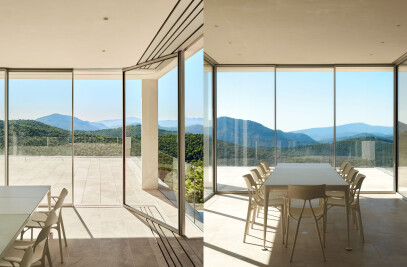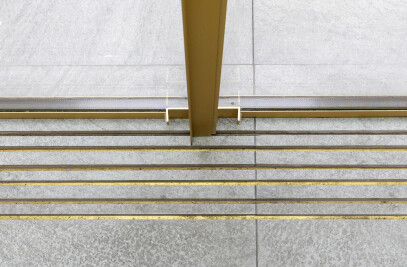Architectural studios HKS, Cagni Williams, and Sonnemann Toon have completed the Midland Metropolitan University Hospital (MMUH), a new state-of-the-art acute hospital in Sandwell, West Midlands, England. A project for Sandwell and West Birmingham NHS Trust, MMUH is part of the “New Hospital Programme” in England, an initiative aimed at building and upgrading hospitals across the country. Described as “one of the most advanced hospitals in Europe,” MMUH sets a new standard for clinical healthcare design. The project also acts as a community regeneration catalyst in an area with high levels of deprivation — it is part of a “designated regeneration zone” between the city of Birmingham and Sandwell.
Planning was granted in September 2015 and MMUH welcomed its first patients on 6 October 2024.
HKS, Cagni Williams, and Sonnemann Toon designed a healthcare facility that combines acute and emergency care from two separate hospitals into one centralized hub. MMUK is built on a 6.7-hectare (16.7-acre) post-industrial brownfield site. Developed and constructed across ten years, the project involved close collaboration with clients, co-consultants, and clinicians. A mammoth undertaking, the new 11-story hospital spans 84,000 square meters (904,168 square feet). MMUH is designed to support operational efficiency and technological innovation, while improving the patient and staff experience. The project incorporates green spaces, a central winter garden, and accessible roof terrace, emphasizing health and well-being.
In profile, the new hospital has the appearance of an ocean liner with its various functions set out in a stacked formation: “The result is a classical tripartite arrangement of a base, a middle, and a top, fronted by a landscaped park to the south,” says Cagni Williams. Setbacks at levels 2 and 5 help to reduce the building’s scale.
The base houses a two-story carpark and above this, the hospital’s spatial layout is centered around its “hot block” clinical facilities, including the emergency department and operating theaters — these are arranged across six internal courtyards. Wards sit above the “hot block” and an impressive winter garden — a “central heart” — spans five stories on the building’s east-facing side. The winter garden’s quilt-like sloping and translucent ETFE roof is the hospital’s most noteworthy architectural feature. ETFE (Ethylene Tetrafluoroethylene) is a lightweight and durable plastic; it offers excellent light transmission and heat insulation, is resistant to UV light, and has a high tensile strength.
The winter garden offers a bright and welcoming arrival point at level 5 of the hospital. Transparent lift cores, stairwells, and walkways help to increase natural light and improve connectivity and wayfinding. The architects explain that “logistics, wayfinding, and patient flow are central to the hospital design.” The interior’s design language is centered around bright orange cores; separate circulation routes for patients, staff, and visitors enhance privacy, navigation, and safety.
Level 5:
The winter garden leads onto an outdoor roof terrace that is accessible to patients, staff, and visitors.
Individual patient rooms and wards optimize natural daylight and views — beds are provided for more than 700 patients and 50 percent of inpatients have access to individual rooms with ensuite bathrooms.
The hospital’s structural design is based on a single standard grid of 7.8 x 7.8 meters (25.6 x 25.6 feet) — this promotes flexibility and allows for future adaptability as healthcare needs change. The design incorporates a unitized facade system and the winter garden’s roof and bridge links were prefabricated off-site.
External facade materials are organized by vertical elements, breaking up the building’s mass and reflecting the structural grid’s rhythm. The material palette comprises terracotta, painted metal cores, orange cross braces, metal louvres, colorful signage, and ETFE pillows. Together, these materials work to refine the building’s massive outward appearance.
HKS, Cagni Williams, and Sonnemann Toon ensured sustainability is central to the functioning of MMUH. Measures include: passive ventilation of the south-facing winter garden, intelligent lighting, the use of PV panels, and water conservation. Green spaces include a large, circular grassy area, landscaped beds, a community garden, and rooftop greenery. There are also new pedestrian and cycle routes along the adjacent canal.































































